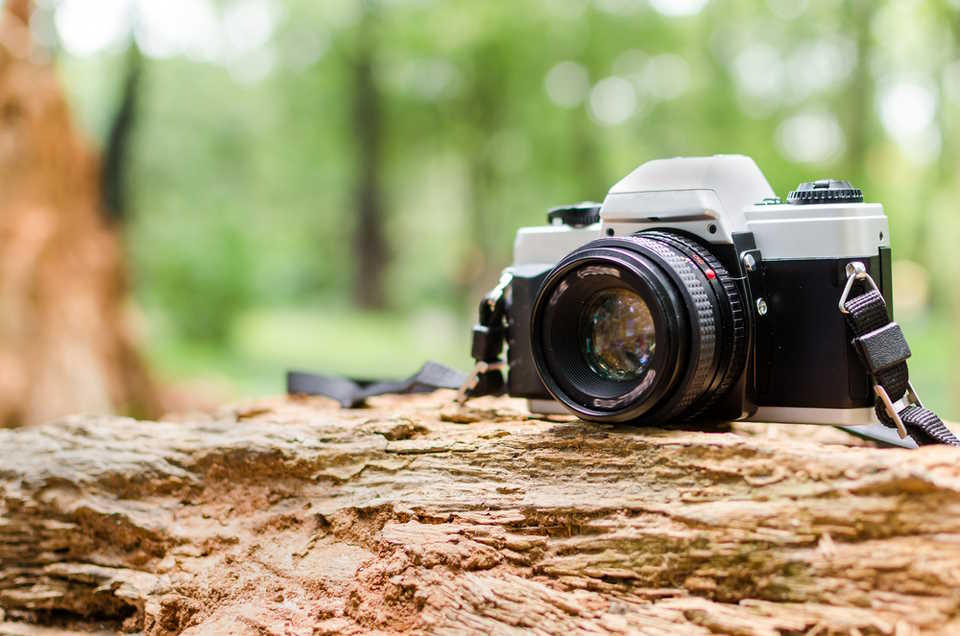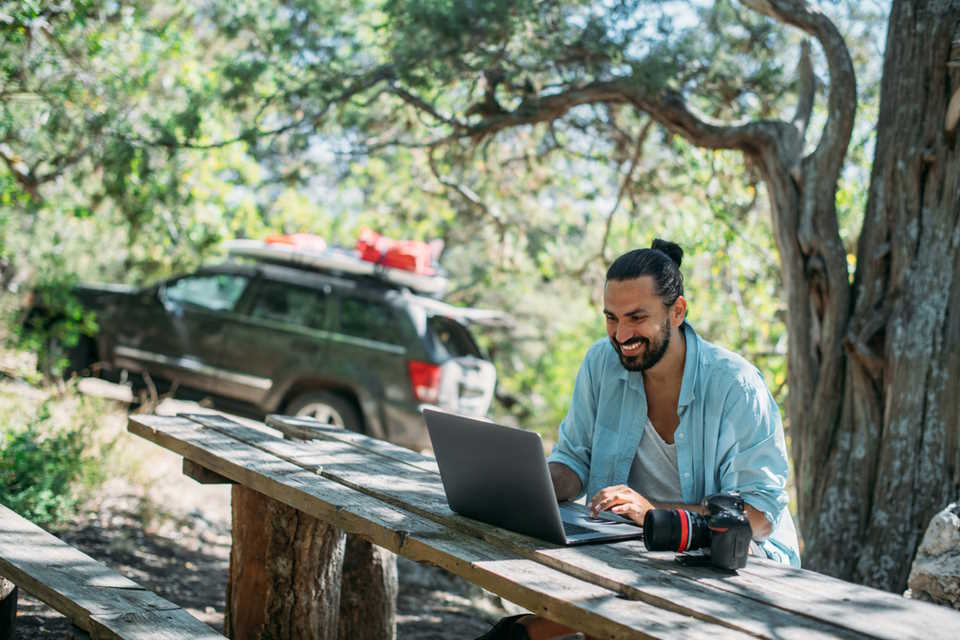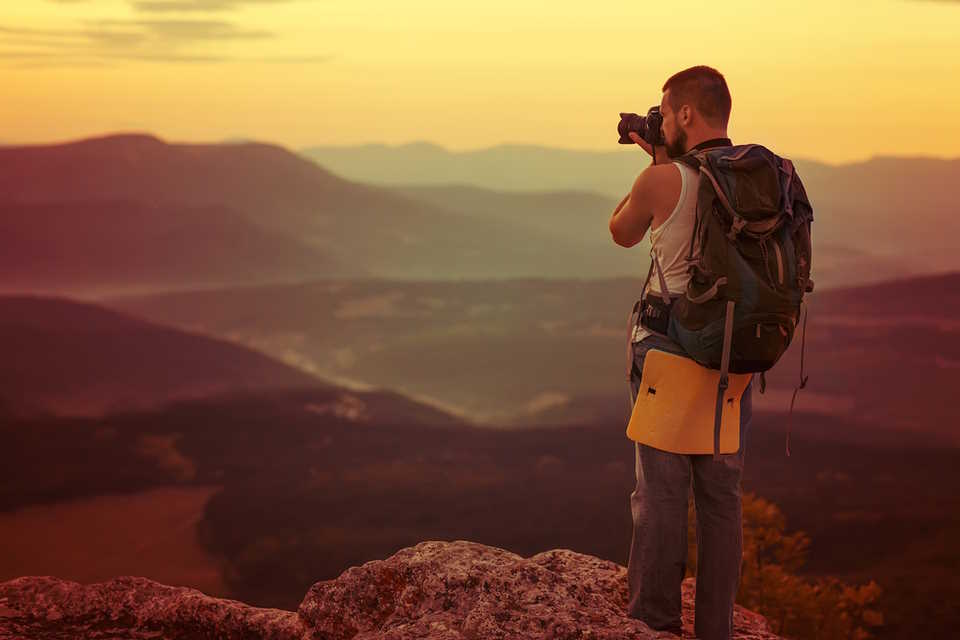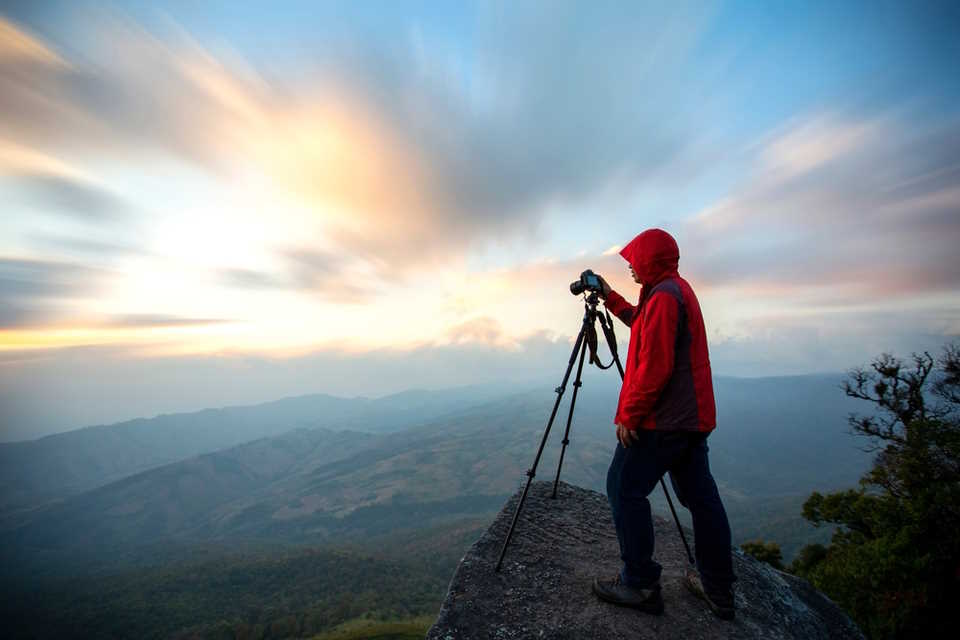Summer is the perfect season to indulge in outdoor photography. The sun shines brighter, days are longer, and nature is at its best. Capturing stunning landscapes, wildlife, and waterfalls is a great way to explore and appreciate the beauty of nature. Whether you are a seasoned professional or an amateur photographer, summer provides endless opportunities to capture beautiful photos.
Outdoor photography during summer is an excellent way to explore the world around you. With the warm weather, you can easily walk, hike or cycle to different locations, enjoy the scenery and take breathtaking photos. The colors of nature are more vibrant during this season, with lush greens, bright flowers, and clear blue skies. The colors of the world are in perfect harmony, and it is the best time to capture the essence of the great outdoors.
Summer is also a season of celebrations, festivals, and events. From street fairs to music festivals, there is always something interesting to capture with your camera. It’s a time of joy and happiness, and your camera can help you capture those special moments that you will cherish forever.
So, whether you are a nature lover or a city dweller, summer is the best time to explore and capture the beauty of the world. With endless opportunities and great weather, outdoor photography during summer can be a rewarding and satisfying experience for any photographer.
Choosing the Right Gear
Outdoor photography in summer is a fantastic way to capture the beauty of nature in all its glory. With long days, clear skies, and vibrant colors, summer provides the perfect backdrop for stunning photos. However, capturing those beautiful shots requires more than just a good eye and creativity – it also requires the right gear.
Choosing the right gear for outdoor photography in summer can be overwhelming. With so many options available, it’s easy to get lost in a sea of gadgets and gizmos. But fear not – with just a few essential pieces of equipment, you can take your outdoor photography to the next level.
| Item | Description |
|---|---|
| Camera | A high-quality camera is essential for capturing sharp, clear images. Look for a camera with a fast lens, high-resolution sensor, and weather-resistant body. |
| Lens | The right lens can make all the difference in your outdoor photography. Consider a wide-angle lens for landscapes or a telephoto lens for wildlife photography. |
| Tripod | A sturdy tripod is a must-have for any outdoor photographer. It will help stabilize your camera and allow you to capture long-exposure shots without blur. |
| Polarizing Filter | A polarizing filter can reduce glare and reflections in your photos, making colors more vibrant and details more clear. |
| Camera Bag | A durable camera bag will protect your gear from the elements while you’re out shooting. Look for one that’s well-padded and water-resistant. |
These are just a few examples of the essential gear you’ll need for outdoor photography in summer. Of course, depending on the type of photography you’re interested in, you may need additional equipment such as a flash, reflector, or even a drone. The key is to choose gear that suits your needs and budget.
Ultimately, the right gear is only part of the equation. It’s also important to practice your skills and experiment with different techniques to create truly stunning photos. With the right gear and a bit of creativity, you’ll be able to capture the beauty of summer in all its glory.
Understanding Light
As outdoor photographers, one of the most important things we need to understand is light. Light can make or break a photo, and understanding how to use natural light can help us capture stunning shots.
First and foremost, it’s important to know the different types of natural light. Direct light is when the sun is shining directly on the subject, creating harsh shadows. Diffused light is when the light is scattered, creating softer shadows. And finally, reflected light is when the light bounces off a surface, illuminating the subject from a different angle.
When shooting in direct light, it’s important to consider the time of day. The best time to shoot in direct light is during golden hour, which is the hour before sunset or after sunrise. This is when the light is warm and soft, creating a beautiful glow. It’s also important to position your subject correctly, so that the light is hitting them at the right angle.
If they’re facing away from the sun, they’ll be in shadow. If they’re facing towards the sun, they may be squinting and the light will be too harsh. A good rule of thumb is to position your subject at a 45-degree angle to the sun.
When shooting in diffused light, you can shoot at any time of day. The light is already soft, so you don’t need to worry about harsh shadows. However, it’s still important to pay attention to the direction of the light and how it’s hitting your subject. You can also use diffused light to your advantage by finding shade or shooting on a cloudy day.
Reflected light is a great way to add a pop of light to your subject. You can use a reflector or even a white piece of cardboard to bounce light back onto your subject. This can help create a more even and flattering light. You can also use reflected light to create interesting shadows and highlights.
In conclusion, understanding natural light is essential for outdoor photography. By knowing the different types of natural light and how to use them, you can create stunning photos that capture the beauty of the world around us.
Composition Techniques
If you’re looking to take your outdoor photography to the next level, mastering composition techniques is a must. Regardless of your camera gear or photography skill level, understanding how to compose your shots can make all the difference in creating stunning visual stories.
Here are some tips for composing beautiful shots and telling a story through your photos:
- Create a focal point: A focal point is the main subject or point of interest in your photo. It could be a person, an object, or anything that grabs the viewer’s attention. Place your focal point off-center to create a more interesting composition.
- Use leading lines: Leading lines are lines in your photo that draw the viewer’s eye towards the focal point. They can be anything from a road to a row of trees to a fence, and they help guide the viewer’s gaze through your photo.
- Play with perspective: Changing your perspective can drastically change the mood and story of your photo. Try shooting from a low angle or a high angle to create a unique perspective.
- Consider the rule of thirds: The rule of thirds is a guideline for composition that divides the frame into thirds both horizontally and vertically. Place your subject on one of these lines or points to create a more balanced composition.
- Add depth: Adding depth to your photos can create a sense of dimension and make your images feel more three-dimensional. Try framing your subject with elements in the foreground or background.
- Don’t be afraid of negative space: Negative space is the empty space around your subject. It can create a sense of calm or emptiness, and it can also make your subject stand out more.
Remember, these are just guidelines, not hard and fast rules. The key to good composition is experimentation and practice. The more you practice, the more you’ll discover what works best for you and your unique style of photography.
Capturing Wildlife
If there’s one thing that unites nature photography enthusiasts, it’s the thrill of capturing wildlife in their natural habitats. From majestic eagles soaring in the sky to playful otters frolicking in the water, wildlife photography allows us to witness the beauty and wonder of the animal kingdom up close and personal.
However, getting great photos of wildlife in their natural habitats is no easy feat. It takes patience, skill, and the right equipment to capture fleeting moments that can make or break your shot. Here are some tips for capturing stunning wildlife photos:
- Do Your Research: Before heading out to photograph wildlife, do some research about the location, animal behavior patterns, and the best time of day to photograph them. This will help you anticipate the animal’s movement and better prepare for that perfect shot.
- Be Patient: Wildlife photography requires a lot of patience. You may have to wait for hours in the same spot to get the perfect shot. Keep your camera ready and be alert at all times, because animals can appear or disappear in seconds.
- Use a Long Lens: A long lens (telephoto) is crucial to wildlife photography. Using a telephoto lens allows you to capture the animal from a safe distance without disturbing its natural behavior. It also helps to compress the background, focusing on the subject and creating a beautiful bokeh effect.
- Shoot in Burst Mode: Capturing animals in motion can be tricky, but shooting in burst mode can help. By shooting a series of images in quick succession, you increase your chances of capturing that perfect action shot.
- Be Mindful of Composition: Composition is key when it comes to wildlife photography. Pay attention to your shot’s background, foreground, and the animal’s position within the frame. Try to tell a story through your images by creating a sense of place and capturing the animal’s behavior in its natural habitat.
With these tips and a lot of practice, you can master the art of capturing wildlife in their natural habitats. Remember to respect the animals and their habitats, and never disturb them for the sake of a photograph. Happy shooting!
Shooting Landscapes
Summer is upon us, and it’s the perfect time for outdoor photography. With the weather warming up, the days getting longer, and nature in full bloom, there’s no better time to capture the beauty of the great outdoors. One of the most rewarding subjects to photograph during the summer is landscapes. From majestic mountains to rolling hills and crashing oceans, there are countless breathtaking vistas waiting to be captured on camera.
But how do you capture the awe-inspiring beauty of nature in your photos? Here, we’ll take a look at some techniques you can use to capture stunning landscape photos during the summer months:
1. Scout Out the Best Locations
The first step in capturing stunning landscape photos is finding the right location. Whether you’re interested in capturing panoramic views or delicate details, scouting out the perfect location is essential. Use online resources, guidebooks, or even just a map to identify potential locations that might interest you. Consider the time of day, the weather, and other factors that may impact your shots.
2. Use Natural Light to Your Advantage
Lighting is one of the most important factors in landscape photography. The natural light provided by the sun can make all the difference. During the summer, the sun is often high in the sky, which can make for some harsh lighting conditions. However, early mornings and late afternoons can provide the perfect soft, warm light that will complement your landscapes. It can also create long shadows and add depth to your images.
3. Use Composition Techniques
Composition is another key element of landscape photography. Using the rule-of-thirds, leading lines, and other techniques can help create a sense of balance and depth in your photos. Try different angles and perspectives to see what looks best, and don’t be afraid to experiment.
Using a tripod can also be helpful in achieving sharper, more stable shots. It can also help you slow down, take your time, and really consider your composition.
4. Experiment with Filters
Filters can be a great way to add creativity and variety to your landscape photos. Polarizing filters can help reduce glare and enhance the colors of the sky and foliage. Neutral density filters can help you balance exposure and create silky water effects. Experiment with different types of filters to see what works best for the particular landscape you’re capturing.
5. Include People or Animals in Your Shots
Adding people or animals to your landscape photos can add a sense of scale and perspective. It can also add an interesting focal point to your images. Consider asking a friend or family member to stand at the edge of a cliff or beside a tree to give your photos an extra sense of depth and perspective. Alternatively, you can try capturing wildlife within their natural habitat. This could add another layer of interest to your images.
By following these tips and experimenting with new techniques, you’ll be well on your way to capturing stunning landscape photos during the summer months. Keep in mind that photography is a creative endeavor, and there are countless ways to capture the essence of nature.
Photographing Water
Water bodies are always an enticing subject for photographers. The brilliance of the sun rays and the beauty of nature makes water a mesmerizing element. Photographing the movement of water is an art in itself. Whether it’s the graceful flow of a river or the splashes of a waterfall, every moment captured on camera can become a cherished memory. Here are some tips for capturing stunning shots of waterfalls, rivers, and lakes:
1. Choose the Right Time of Day
The timing of your photo shoot is crucial when it comes to capturing the perfect shot. Early morning and late afternoons are the best time of day for photographing water, as the soft light enhances the colors and texture of the water. Midday sun can cause glare and make the highlights in the water too bright.
2. Use a Slow Shutter Speed
To capture the movement of water, you need to use a slow shutter speed. A slower shutter speed will create a blur effect, giving the water a smooth and silky appearance. The ideal shutter speed depends on the speed of the water and the desired effect. Experiment with different shutter speeds to find the perfect one.
3. Use a Tripod
A tripod is a must-have accessory for photographing water, as it keeps the camera stable and reduces blurriness. It also allows you to use a slower shutter speed without the risk of camera shake. Make sure your tripod is sturdy and can support the weight of your camera.
| Pros of Using a Tripod | Cons of Using a Tripod |
|---|---|
| Reduced blurriness | Not ideal for capturing fast-moving action |
| Allows use of slower shutter speed | Can be cumbersome to carry around |
| More stable shots | Can limit your flexibility |
4. Experiment with Angles and Perspectives
Don’t just settle for the traditional front-on shot. Experiment with different angles and perspectives to find a more unique and interesting shot. Try getting low to the ground or shooting from a higher vantage point to capture a different view of the water body.
5. Use a Polarizing Filter
A polarizing filter is a useful accessory for photographing water, as it reduces reflections and enhances colors. It can also reduce glare and make the water appear more clear and vibrant. Make sure to adjust the filter according to the position of the sun to get the maximum effect.
Photographing water can be challenging, but with the right techniques and equipment, you can capture stunning and memorable shots. These tips will help you capture the beauty and movement of water bodies this summer.
Editing Your Photos
As an outdoor photographer, capturing breathtaking photos is just the beginning of the journey. The editing process is equally important in telling a visual story with your photos. With a little bit of editing, your photos can be transformed into stunning pieces of art that can captivate the viewers.
Here are a few tips for editing your outdoor photos:
- Always start with a good software. There are various software options available, but Adobe Lightroom and Photoshop are the most commonly used by professionals. You can choose the one that suits your needs and budget.
- Adjust the exposure. The exposure is the amount of light that enters the camera sensor, and it’s essential to get the right balance of light in your photo. You can adjust the exposure using the slider in Lightroom or the Levels Tool in Photoshop.
- Crop and straighten. Cropping and straightening can help to improve the composition of your photo. In Lightroom, you can use the Crop Tool, and in Photoshop, you can use the Crop Tool or the Transform Tool.
- Enhance the colors. You can bring out the colors in your photo by adjusting the saturation, vibrancy, and contrast. But be careful not to overdo it, as it can make your photo look unrealistic.
- Sharpen the photo. Sharpening can make your photo look crisp and clear. You can use the Sharpen Tool in Lightroom or the Smart Sharpen Tool in Photoshop.
- Remove any distractions. If there are any distracting elements in your photo, you can remove them using the Clone Stamp Tool in Photoshop or the Spot Removal Tool in Lightroom.
By following these basic guidelines, you can enhance your outdoor photos and tell a visual story that captivates the viewers. But remember, editing is just a tool, and it’s important not to overdo it. Keep it simple, and let your photos speak for themselves.
Conclusion
Summer is a wonderful time to take your photography outdoors. With the sun shining and nature coming to life, there are plenty of opportunities to capture stunning shots. However, to get the most out of your outdoor photography, you need to have the right technique and equipment.
The first and most important tip is to get to know your gear. Invest in a high-quality camera with a variety of lenses and accessories so that you can capture the perfect shot in any situation. Research the best equipment for outdoor photography and practice using it before you head out into nature.
Another crucial element of outdoor photography is understanding light. The soft, warm light of early morning and late evening is perfect for capturing stunning shots. Learn how to use natural light to your advantage and experiment with different angles to create depth and texture in your photos.
- Get to know your gear
- Understand light and use it to your advantage
- Experiment with composition and storytelling techniques
- Practice patience and be prepared for any situation
- Edit your photos to enhance their beauty and tell a visual story
- Share your work with others to gain feedback and inspiration
When it comes to composition, there are a few key techniques to keep in mind. First, pay attention to the rule of thirds – try to place your subject in one of the intersections of the imaginary grid to create balance and interest. Also, think about the story you want to tell with your photos. Pay attention to the details and use your composition to highlight the important elements of the scene.
Of course, outdoor photography often requires a bit of patience and preparation. Be ready for any situation – bring extra batteries, water, and sun protection. Take the time to scout out locations and wait for the perfect shot, even if it means sitting in one spot for hours!
Editing your photos is another important step in creating beautiful outdoor shots. Use filters and adjustments to bring out the colors and textures of your subject, and experiment with different styles to tell a visual story. Finally, don’t forget to share your work with others. Show off your photos on social media, join photography groups, and seek feedback from other photography enthusiasts.
Overall, capturing beautiful outdoor shots during summer requires a combination of technique, preparation, patience, and creativity. Follow these essential tips, and you’re sure to create stunning photos that showcase the beauty of nature.















